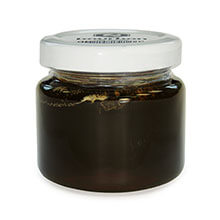History of Beekeeping, Honey Bees, and Apiculture
January 30, 2024
by Rebecca Henry

Today we will explore the fascinating history of beekeeping and its evolution from a basic survival skill to what it has now become in today's world.
Ancient Beginnings
The practice of beekeeping is known to have originated from Egypt. Archaeological evidence suggests that Egyptians were among the first to domesticate bees around 2400 BCE with hieroglyphs on the walls of tombs depicting scenes of beekeepers tending to beehives, and jars of honey have been found in ancient Egyptian burial sites.There, it spread to ancient Greece, where it became an integral part of agriculture and culture. When beekeeping made its way to ancient Rome, it continued to flourish and soon recognized the economic value of beekeeping, and it became a lucrative trade.
As the ancient worlds had their own basic standard honey, we too have that today. While we don’t offer any ancient honeys, one staple that we highly recommend is Tupelo Honey https://www.adagiobees.com/honey-tupelo.html. Produced in the South Eastern United States from White Ogeechee Tupelo Trees, the look of this choice is lighter in color as well as floral and fruity in flavor.
Middle Ages & Monasteries
Over the years, and especially during the Middle Ages, beekeeping was primarily practiced by European monks in monasteries where beehives were maintained for the production of honey, mead, and beeswax leaving zero to none of the comb to waste.Beekeeping, like other skills such as brewing, became an essential skill in monastic life, and many monasteries developed advanced beekeeping techniques. It was also during this time period that monks helped contribute to bees' scientific observation that influenced the 17th century Benedictine monk, Brother Adam, who continued to conduct extensive research on honeybee genetics and breeding.

The Renaissance
It was during the Renaissance when the rebirth of many trades, skills, knowledge, and science, that allowed for the skill of beekeeping to continue to evolve.In 1623, Charles Butler revolutionized the skill by inventing the moveable comb hive that allowed beekeepers to inspect hives without destroying them, making the process more sustainable and efficient.
Later in the 18th century, other technologies were created. European beekeepers began using skeps—domed, basket-like structures—as beehives. While effective, skeps posed challenges for hive inspection and honey extraction. And as beekeeping continued to grow as did the market, the need for better hive management became a need and was met by 19th century Lorenzo Langstroth who designed removable frames and precise bee space, which became the standard for modern beekeeping.
Industrialization
As the world was thrown into the Industrial Revolution, beekeeping also became industrialized with the introduction of mechanical honey extractors and other innovations. It was also during this time that beekeeping transitioned from a small-scale, localized practice to a larger, more commercialized industry.The widespread use of the Langstroth hive and the advent of beekeeping associations contributed to the standardization of beekeeping practices. Soon, beekeepers began to share knowledge and experiences, leading to advancements in hive management, disease prevention, and honey production.
Challenges and Innovations in the 20th Century
Some fun innovations that, for sure, weren't started in the 20th century but became more prominent are flavored honeys.

One example of this is our Bourbon Honey - a new addition to our honey family that has become a unique treat for those wanting new flavors. Rich and sweet, this profile combines the warm notes of oak bourbon is known for with the complimenting sweetness from honey.
However, the 20th century brought challenges as well. The introduction of pesticides, particularly synthetic insecticides, posed a threat to bee populations and a huge factor with disease prevention.
Researchers and beekeepers collaborated to address these challenges and began to integrate pest management strategies as well as emphasize the importance of sustainable beekeeping practices gained recognition.
In recent decades, beekeeping has gained renewed popularity as people recognize the critical role bees play in pollination and ecosystem health. The decline in honeybee populations, attributed to factors like pesticide use and habitat loss, has sparked a global movement for bee conservation.
Conclusion
Beekeeping has come a long way from its ancient roots, evolving from a basic survival skill to a sophisticated and vital industry. Throughout history, humans have recognized the value of bees not only for their sweet honey but also for their essential role in pollination.As we navigate the challenges of the 21st century, the history of beekeeping serves as a reminder of our deep connection to these remarkable insects and the importance of sustainable practices to ensure their survival and the health of our ecosystems!